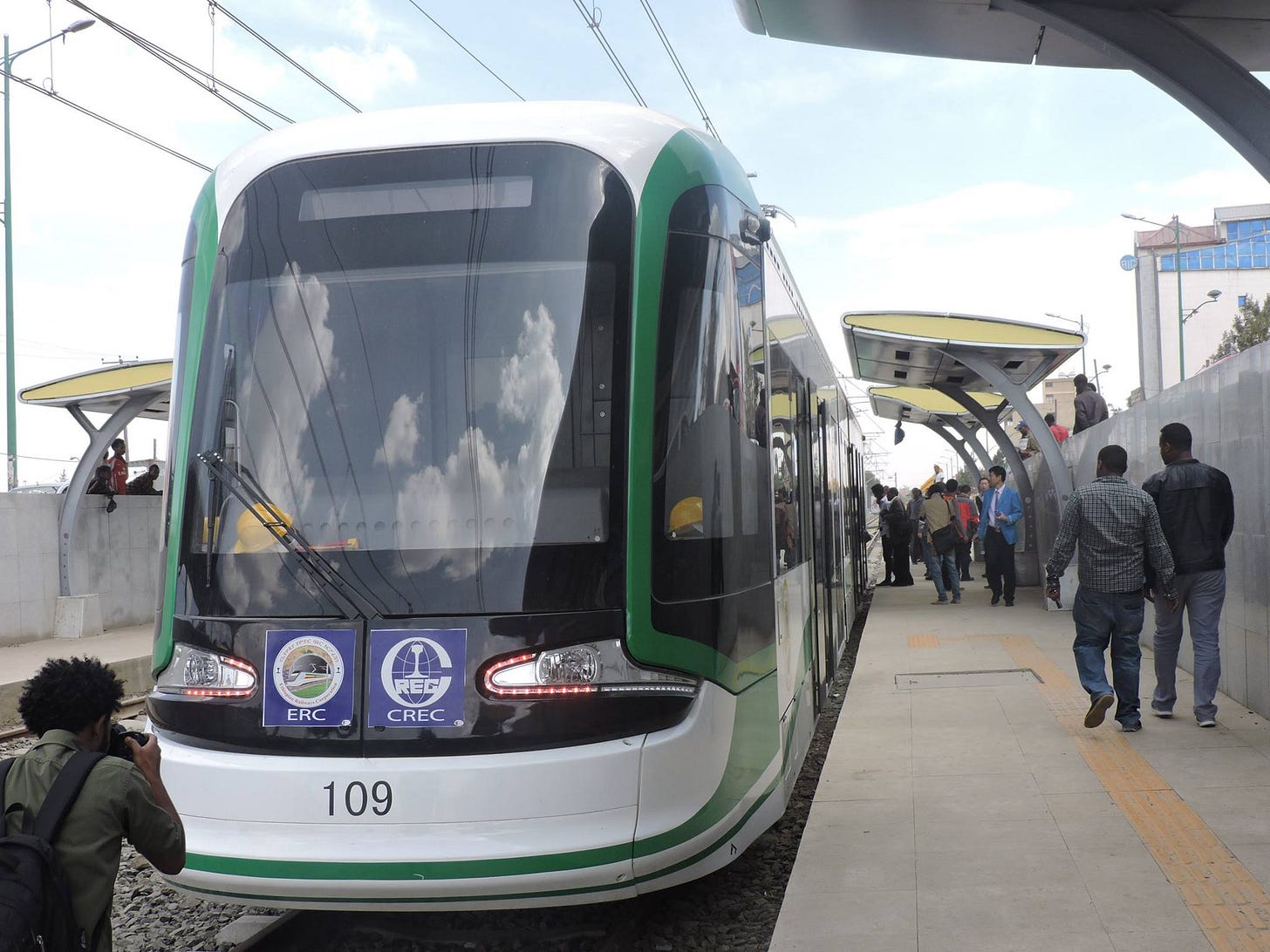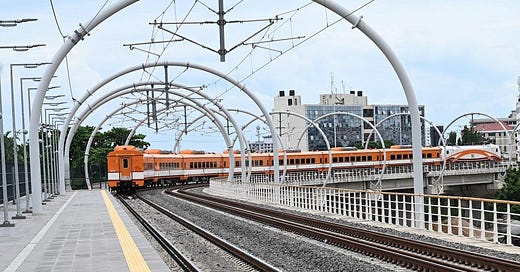ELECTRIC TRAINS FOR TANZANIA
Tanzania's inaugural electric train system has undergone test runs
Recently, Tanzania’s inaugural electric train embarked on its first trial run, commencing from the commercial city of Dar es Salaam and concluding in the capital city of Dodoma. This remarkable journey spanned a distance of 448.6 miles (722 km) and was accomplished in an impressive three hours, with the train reaching a speed of 180.2 mph (290 km/h). To provide further context, the equivalent road travel between Dar es Salaam and Dodoma typically requires 8 hours and 5 minutes.
The Tanzania Electric Standard Gauge Railway (TSGR) can now proudly lay claim to one of the fastest electric trains on the African continent.
Technically, this high-speed train operates using a catenary contact wire system, which receives 250 kilovolts of 50 Hz AC power from overhead electric cables. The train passengers have internet access through the onboard WiFi system.
Yapi Merkezi of Turkey is the main engineering company handling Tanzania Electric Standard Gauge Railway (TSGR) project, which is being implemented in phases. The railway line from Dar es Salaam to Dodoma represents the first two phases of the nine-phase project.

Here is video footage of a trial run of the electric train at relatively slower speed for a 4-hour journey from Dar es Salaam to Dodoma with voice-over narrative from a Tanzanian rail passenger with a strong, but relatively pleasant East African (Swahili) accent:
Tanzania is one of several African countries either modernizing existing railway infrastructure or building brand new ones from scratch with the aid of finance from various sources. In the case of the recently launched electric train, which cost 2.2 billion dollars, funding came from the Tanzania Ministry of Finance, African Development Bank, Sweden, Denmark and Turkey.
To get details of Turkey's longstanding involvement in infrastructural projects across large swathes of sub-Saharan Africa, read only Section IV of my fourth update on situation in Niger Republic.

In Nigeria, the federal government and individual state governments have their own parallel railway projects. Last year, the government of Lagos State commissioned the Blue Train Line, which is the first phase of the larger Lagos Metro Railway Project. The state government project is aimed at addressing the heavy traffic congestion in the City of Lagos, the most populous urban centre on the entire African continent because of its 21 million residents.
For more on the Lagos Metro Rail, read the article I wrote last year, which can be accessed by clicking on the thumbnail below:
LAGOS METRO RAIL GOES LIVE
Two decades after construction work began, interspersed with periods of lengthy delays, the first phase of the Lagos State Metro Rail has now come alive INTRODUCTION With 16 million inhabitants, Lagos State is the most populous state in the Nigerian Federation
Dear reader, if you like my work and feel like making a small donation, then kindly click on the yellow image above or on my linked Digital Tip Jar at Buy Me A Coffee







I think Americans have been cheated. From the 1930s-1950s, my great-grandfather, Paul McIntosh, MS, was an engineer who worked for a medium sized electric rail line in my State (a Master of Science engineer, not an "operating engineer"). Small and medium sized lines could not subsist entirely on dates and freight charges, however, they were able to succeed by the assistance of a Federal subsidy.
The arrangement didn't last. Petroleum corporations made little profits from local rail lines, which, like the Inter-Urban Railroad my great-grandfather worked for, often used electric locomotives. In 1953, the resentful petroleum lobbies, at the instigation of Rockefeller-owned Standard Oil, prevailed over the Congress to rescind the subsidy in all of the "lower 48" states. For many rural communities that lacked access to major roads and highways, this move was crippling. Incidentally, my great-grandmother, Amanda McIntosh's family had owned a family ranch in northwest Missouri for generations. Without rail access, however, the ranch was no longer profitable, and had to be sold at an unfavorable price.
A great achievement on the part of Tanzania. I look forward to seeing phases 5 and 6 of the TSGR project to finally bring connectivity across Tanzania, from the shores of the great African lakes to the port of Dar es-Salaam,.